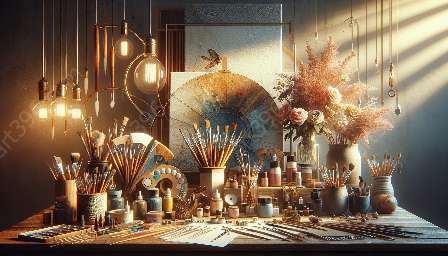Art and crafting enthusiasts understand the importance of using the right tools for their projects. One of the most essential tools for painting and crafting is brushes. There are various types of brushes, each with its unique characteristics and recommended uses. Understanding these types can help artists and crafters achieve their desired results. Let's explore the different types of brushes and their recommended uses, considering the characteristics of popular art and craft supplies.
Types of Brushes
1. Bristle Brushes: Bristle brushes are made from natural hog hair, which makes them suitable for oil and acrylic painting. They have a coarse texture and are ideal for creating textured effects and covering large areas.
2. Synthetic Brushes: Synthetic brushes are constructed with artificial bristles, such as nylon or polyester. They are versatile and can be used with various mediums, including watercolor, acrylic, and oil. Due to their smooth and durable nature, they are suitable for applying smooth layers of paint.
3. Round Brushes: Round brushes have a round or pointed tip, making them suitable for creating fine lines, detailing, and filling in small areas. They are widely used in watercolor painting, calligraphy, and outlining in acrylic and oil painting.
4. Flat Brushes: Flat brushes have a straight edge, which allows for precise strokes and broad application of paint. They are commonly used for blending, washes, and creating sharp edges in both acrylic and oil painting.
5. Filbert Brushes: Filbert brushes have a flat, oval-shaped tip, combining the characteristics of flat and round brushes. They are versatile and can be used for blending, softening edges, and creating curved strokes in various painting techniques.
Recommended Uses
Understanding the recommended uses of different types of brushes is crucial for artists and crafters to achieve the desired effects in their work. Here are the recommended uses for each type of brush:
Bristle Brushes:
- Recommended for heavy body acrylics and oil paints
- Creating texture and impasto effects
- Covering large areas with paint
Synthetic Brushes:
- Compatible with various mediums, including watercolor, acrylic, and oil
- Suitable for smooth application of paint
- Durable and easy to clean
Round Brushes:
- Creative detailing and fine lines in watercolor painting
- Outlining and precise strokes in acrylic and oil painting
Flat Brushes:
- Applying washes and creating sharp edges
- Ideal for blending and covering large areas
Filbert Brushes:
- Blending and softening edges
- Creating curved strokes and organic shapes
It's important to note that these recommended uses are general guidelines, and artists and crafters may experiment with different brushes to achieve unique effects in their work.
Characteristics of Popular Art and Craft Supplies
While understanding the types of brushes and their recommended uses is fundamental, the characteristics of popular art and craft supplies play a significant role in the overall creative process. Here are some essential characteristics of popular art and craft supplies:
Paints:
- Viscosity and consistency vary based on the type of paint (e.g., heavy body acrylics, fluid acrylics, watercolor)
- Lightfastness and permanence ratings determine the longevity of colors
- Transparency and opacity properties impact layering and mixing
Canvas and Paper:
- Texture and weight influence the application of paint and media
- Acid-free and archival qualities ensure the longevity of artworks
- Available in various sizes and formats to accommodate different artistic styles
Drawing and Illustration Supplies:
- Quality of pencils, pens, and markers affects line work and shading techniques
- Variety of paper surfaces and sketchbooks cater to different drawing styles
- Erasability and blending characteristics impact overall drawing experience
Crafting Materials:
- Texture, durability, and flexibility are essential for different crafting projects (e.g., fabric crafts, jewelry making, and mixed media)
- Adhesion and compatibility with adhesives and embellishments
- Availability of unique and specialty materials for creative exploration
Understanding these characteristics empowers artists and crafters to make informed decisions when selecting art and craft supplies for their projects. By considering both the types of brushes and the characteristics of popular art and craft supplies, individuals can enhance their creative endeavors and bring their artistic visions to life.

